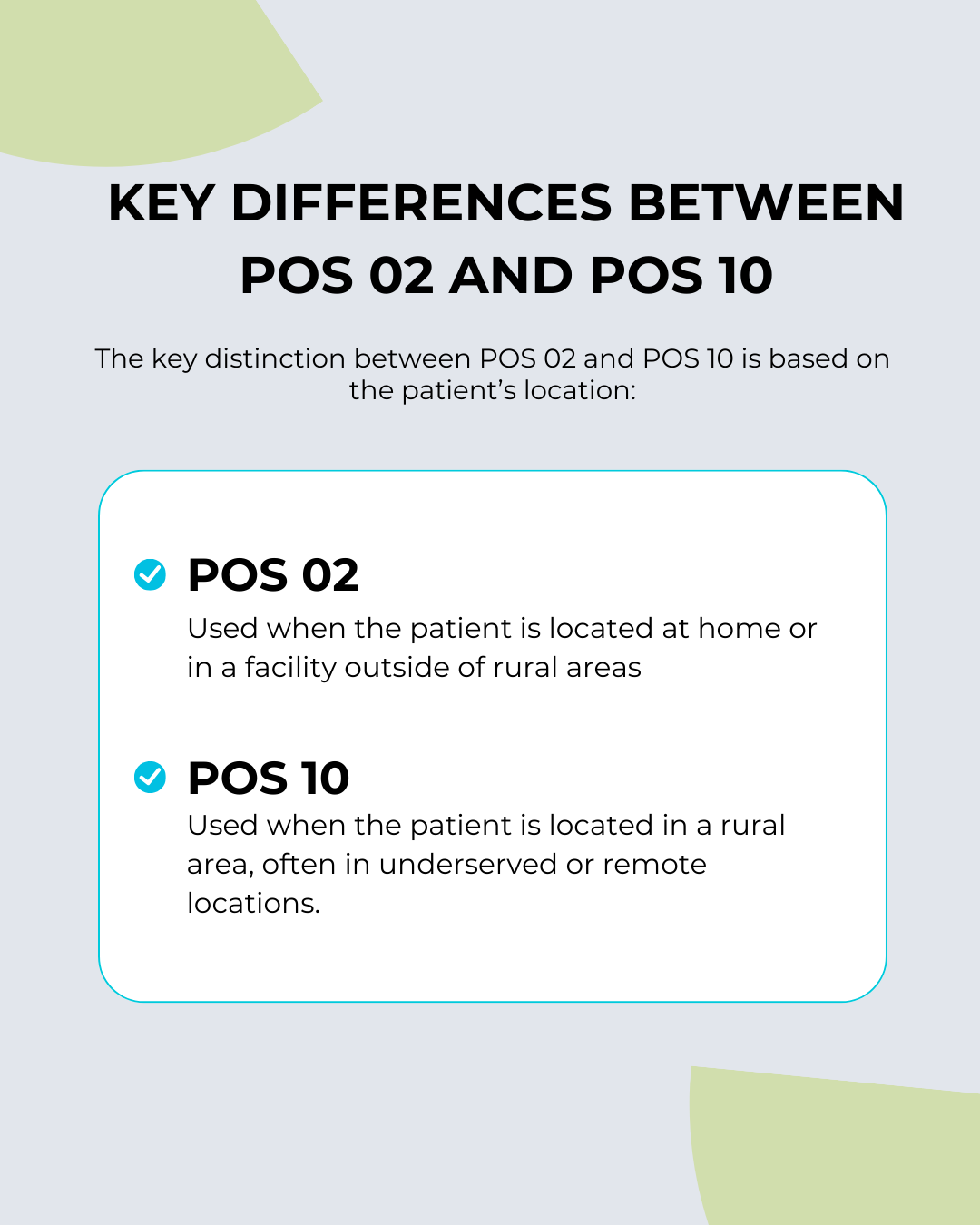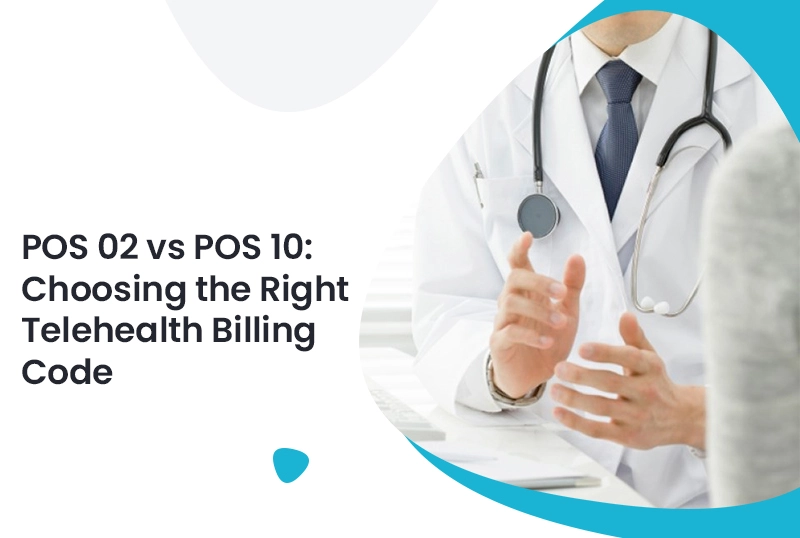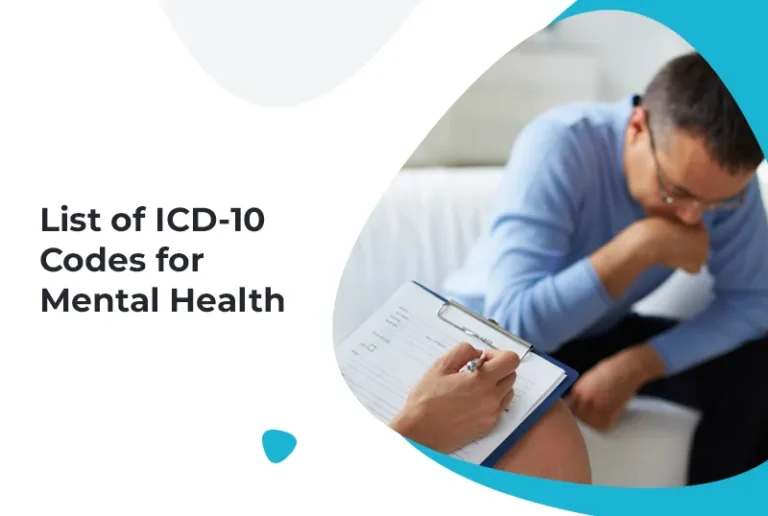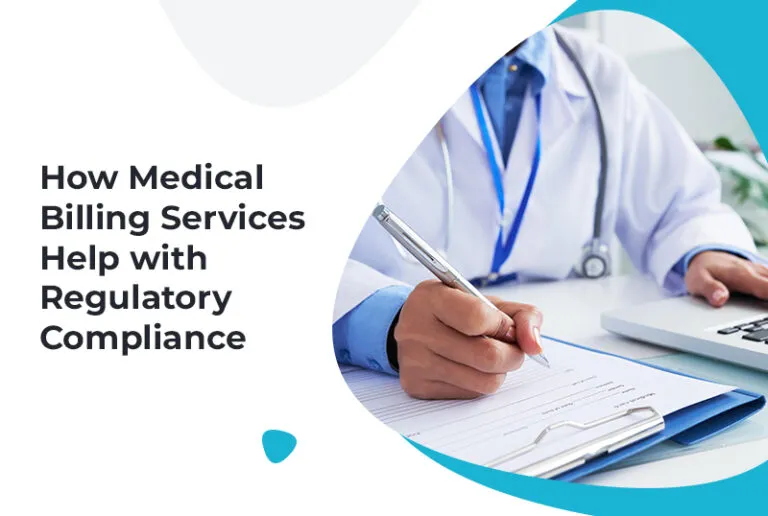Telehealth transforms healthcare delivery by giving patients convenient access to medical care from the comfort of their homes. As telehealth continues to grow, healthcare providers must prioritize accurate billing practices. Choosing the correct Place of Service (POS) code plays a vital role in telehealth billing. Providers commonly use POS 02 and POS 10, and understanding when and how to apply each code ensures accurate billing and proper reimbursement.
This guide will provide an in-depth comparison of POS 02 and POS 10, helping healthcare providers choose the right telehealth billing code based on the patient’s location and the type of service provided.
What Are POS Codes and Why Do They Matter?
Place of Service POS codes are used in medical billing to specify the location where a healthcare service was provided. These codes are integral to determining reimbursement rates and ensuring compliance with payer policies. In telehealth, POS codes help insurers distinguish between services delivered in person and those delivered remotely.
For telehealth services, POS 02 and POS 10 are used to identify where the patient is located when receiving remote care. The correct application of these codes is critical for both proper billing and reimbursement. Incorrectly using POS codes could lead to denied claims or delayed payments.
Understanding POS 02: Telehealth Services Provided from a Healthcare Facility
Healthcare providers use POS 02 when they deliver telehealth services from a facility (e.g., a hospital or doctor’s office) to a patient located elsewhere, such as at home or in another facility. Providers commonly apply this code for telehealth encounters involving patients in non-rural locations.
When to Use POS 02
- Telehealth in Non-Rural Settings: POS 02 applies when the healthcare provider is located in any healthcare facility and the patient is at home or another remote location. This includes urban and suburban settings.
- Reimbursement Implications: This code allows healthcare providers to receive reimbursement at the same rate as in-person services. It offers a simple and accurate way to bill for telehealth services.
Using POS 02 helps your practice receive accurate reimbursement for remote services delivered from a healthcare facility to a patient in another location.
Understanding POS 10: Telehealth Services for Rural Patients
POS 10, on the other hand, is specifically used for telehealth services provided to patients located in rural areas. This code is intended for telehealth consultations that occur in rural settings, typically where access to healthcare facilities is limited.
When to Use POS 10
- Telehealth in Rural Areas: POS 10 is applicable when the patient is located in a rural area. These areas are often underserved, with limited access to healthcare providers.
- Rural Reimbursement Benefits: Using POS 10 may provide additional reimbursement benefits to providers due to the unique challenges associated with delivering healthcare in rural areas. It is crucial to apply this code correctly to ensure that rural telehealth services are reimbursed at an appropriate rate.

This difference is critical for accurate billing and reimbursement. Applying the wrong code could result in claims being denied or underpaid, which could negatively impact your practice’s financial health.
The Role of Medical Billing Service in Telehealth Billing
Accurate telehealth billing requires expert knowledge of medical coding, including the appropriate use of POS 02 and POS 10. This is where medical billing service play an important role. By outsourcing your medical billing to a dedicated service provider, your practice can ensure that every telehealth service is billed correctly, with the appropriate POS code applied.
Professional billing services stay updated on the latest coding rules and payer requirements, helping to reduce the risk of errors and ensuring your practice receives timely and correct reimbursement.
Revenue Cycle Management and Correct POS Code Use
Correct POS code application is a key component of effective Revenue Cycle Management (RCM). Efficient RCM ensures that claims are processed correctly and payment is received promptly. When POS 02 or POS 10 is used accurately, the reimbursement process runs smoothly, and your practice avoids costly delays or denials.
RCM services can also assist with optimizing the entire billing process, from coding through to payment collection. By leveraging RCM solutions, your practice can improve its financial efficiency, ensuring a steady cash flow and maximizing revenue.
Why Medical Credentialing Services Matter for Telehealth Billing
In addition to accurate POS code application, healthcare providers must also ensure that they are properly credentialed with insurance companies to provide telehealth services. Medical credentialing services are critical for ensuring that your practice can bill for telehealth services and receive reimbursement from insurers.
Credentialing services help healthcare providers maintain compliance with payer requirements, ensuring that telehealth services are reimbursed without issues. Working with a medical credentialing service provider ensures that your practice is set up for success in the ever-evolving telehealth landscape.
Conclusion
Choosing the correct POS code for telehealth services is essential for accurate billing and reimbursement. Whether you use POS 02 for non-rural telehealth encounters or POS 10 for rural telehealth services, it is crucial to understand the nuances of each code to ensure compliance and maximize reimbursement. By leveraging medical billing services, Revenue Cycle Management, and medical credentialing services, healthcare providers can streamline their billing processes, avoid costly errors, and maintain a steady revenue stream in the rapidly evolving world of telehealth.
FAQs About POS 02 vs POS 10
1. What is the difference between POS 02 and POS 10?
POS 02 is used when a healthcare provider delivers telehealth services from a healthcare facility to a patient located at home or another facility. POS 10 is used when the patient is in a rural area.
2. Can I use POS 02 for telehealth in a rural area?
No, POS 02 should only be used when the patient is in a non-rural setting. For rural patients, you must use POS 10.
3. How do I know when to use POS 02 or POS 10?
If your patient is in a rural area, use POS 10. Otherwise, use POS 02 for telehealth services delivered from a healthcare facility to a patient at home or another facility.
4. How can medical billing services help with telehealth billing?
Medical billing services ensure that the correct POS code is used and that claims are submitted accurately, reducing the risk of denials and improving reimbursement.
5. What is the role of Revenue Cycle Management in telehealth billing?
RCM ensures that telehealth services are billed correctly and reimbursed promptly, optimizing the billing process for faster payment and fewer claim errors.







